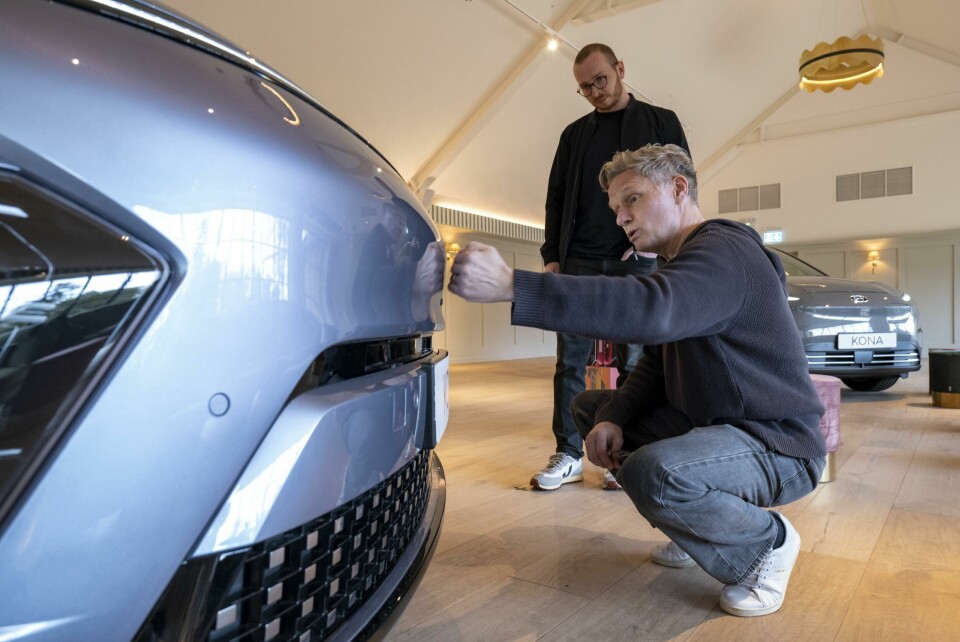
First sight: new Hyundai Kona EV
We have already seen the new Hyundai Kona EV in pictures, but Car Design News was given an exclusive walkaround of the all-new Kona EV with head of styling Simon Loasby
CDN was recently invited to a reveal of the new Hyundai Kona which for the first time was developed from scratch as an EV. It will be sold with the usual ICE and hybrid variants, but the design philosophy was flipped – designed for battery power first and anything else second.
Our first look in the flesh came through a visit to the Cotswolds in southwest England, a setting that is far removed from the car’s origins in Namyang, Seoul, where VP and head of Hyundai styling, Simon Loasby, is based. Not long after jumping off a flight, he gave us a walkaround of the new model and made clear that this was a special project.
Parked opposite the previous generation model it was clear that the new Kona EV sports a fresh face with the Seamless Horizon headlights peeking through the cover. This narrow lightbar is mirrored at the rear and consists of many small pixels as part of the (now trademarked) Parametric Pixel design language. These tiny squares are a central theme to the car but the team was careful not to overdo it – there is too much of a good thing – with the only other obvious example being the decorative pixels on the lower mask.
We always challenge ourselves to see how far can we go
We have already seen the new Kona in pictures, but in person it has a kind of presence that we would not usually expect from this model. It is a familiar silhouette but perhaps leans closer to SUV than crossover. At 4,355mm it is 175mm longer than the previous generation, and sports a wheelbase that is 60mm longer. It is 25mm wider, and 20mm taller, too. So all in all a bigger car, but still well-proportioned. “It’s scaled up, but every dimension got better somehow,” says Loasby.
The arches are heavily flared and feature split levels that further emphasise the car’s width. ‘Folded paper’ creases in the doors and intricate lines elsewhere in the lower body make for a slightly busier side profile compared to the original. There was a close relationship between design and engineering on this project, with Loasby admitting that they pushed the limits of what could be done when it comes to metalworking. “But we were all on the same page,” he says. “We always challenge ourselves to say ‘how far can we go’.”
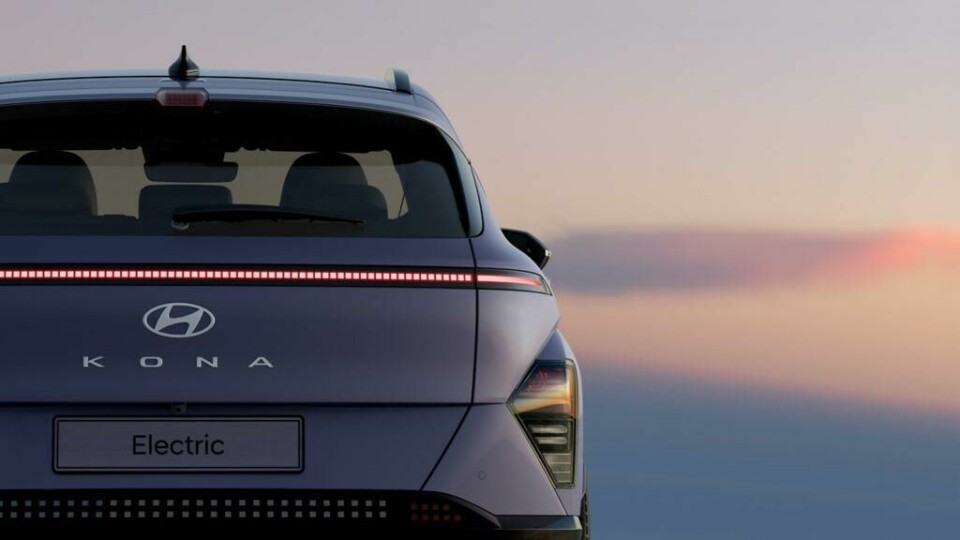
Elsewhere, subtle contrast sections above the side sills reduce the visual proportions of the car. All this sets it apart from its predecessor, which sat more like a hatchback. The casual observer would say this simply feels sportier than before, while Loasby goes as far to say that it now has “body armour.”
This ‘grown up’ approach carries through to the wheel design, which consists of two sets of pixels with an inner and outer layer. The rims are also slightly dished and suit the feel of the more muscular exterior. Loasby assures us this is very much still a Kona – designed for families, outdoorsy folk and drivers of all ages – just a little more rugged and premium than before.
And this is the direction in which Hyundai is headed. The design team sees itself as “the hunted” in the same way that a championship-winning sports team might. With accolades like CDN’s Concept Car of the Year (for the N Vision 74) and various car of the year awards going to the Ioniq 5 and 6, that’s probably a fair way to look at things.
Those cars have captured the attention of the motoring press for their radical designs, but the Kona is a mainstay of the Hyundai brand not only in its home market but in Europe and North America – with sales split evenly between the three markets. Loasby explains that the redesign was not taken lightly.
It’s still a Kona, but it’s growing up
“We realised that the Kona has such a wide bandwidth of ages and use scenarios but everyone has the same kind of carefree lifestyle. Every car grows with time but we needed to stay true to that, so the brief became clear quite quickly: it’s still a Kona,” he says. “In our vision presentation we even had that in yellow writing on the wall. It’s still a Kona, but it’s growing up, just as people do. And what made the Kona EV so successful was its broad balance of capabilities, so that’s why we decided to start with the EV this time and do derivatives from that.”
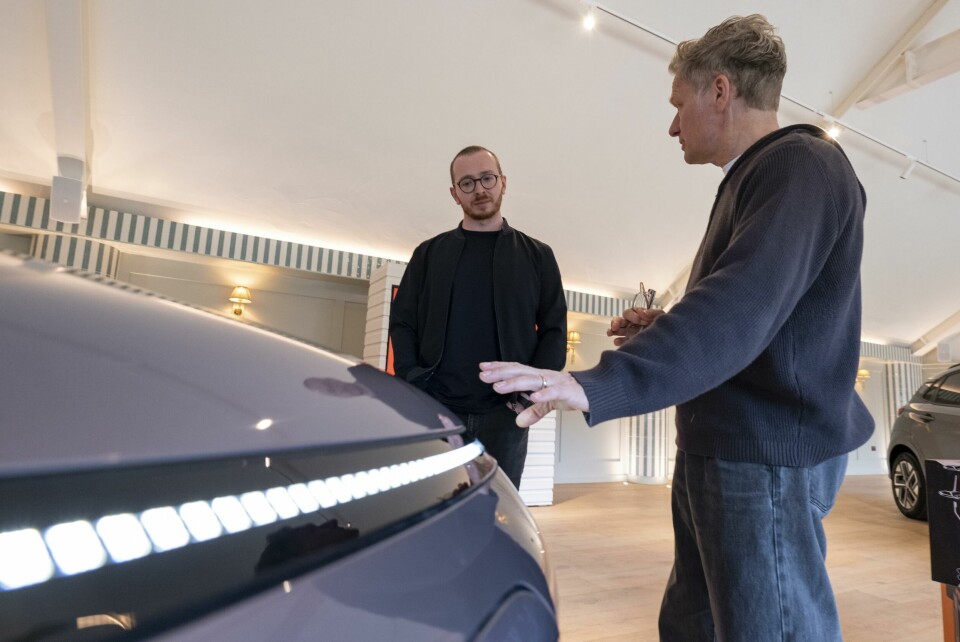
Inside, there are some clever approaches to the cabin – some practical, some playful. A small magnet board sits to the left of the instrument cluster, for example, which Loasby says can be used to pin anything from parking tickets to family photos. There was initially some pushback from the studio in Namyang as physical parking tickets are less common in Korea than in Europe or the US, and so the fact that this made the cut is an indication of how the global teams work together.
You know you’re in a Hyundai… you don’t need the interior to shout that at you
There is no obvious branding in the interior – no badges, logos or anything else that screams “you’re driving a Hyundai.” Not even on the steering wheel, the holy grail for marketeers as it sits directly in the driver’s eyeline. Instead there are just four LED pixels, which light up in different colours when charging or changing drive mode from ECO to Sport, etc.
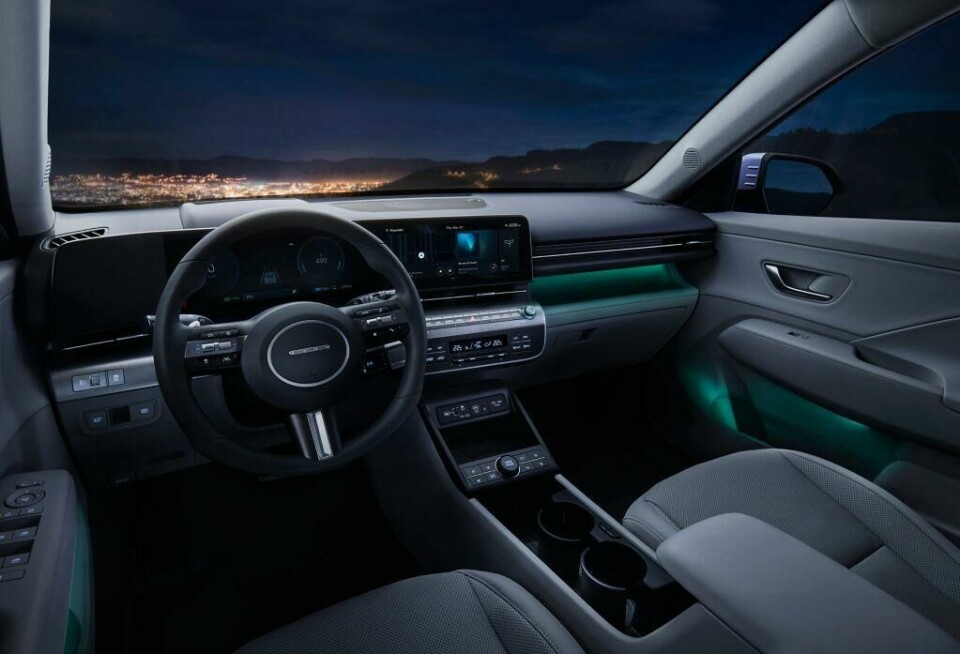
These four pixels are a clever combination of the Korean alphabet – the letter M is almost a perfect pixel – and morse code, as four dots is the letter H. This isn’t immediately clear unless of course you are sat next to a senior Hyundai designer, but it’s a lovely touch. As Loasby puts it: “You know you’re in a Hyundai before you step inside, you don’t need the interior to shout that at you.”
We don’t like to package air
It will surprise no one that the aim was to create more of an “experience” inside and the design team took care to ensure it was driver-oriented but not like a ‘fighter pilot’. Loasby suggests that interior designers should almost view themselves as furniture designers these days, creating “furnished living spaces” that are calming and comfortable but still functional. The dash is wide and clean, which when teamed with the car’s extra width makes for a roomy cabin. Ambient lighting under the instrument panel and door cards can be adjusted through the touchscreen, although it is hidden within a few menus, so perhaps best to set before driving off.
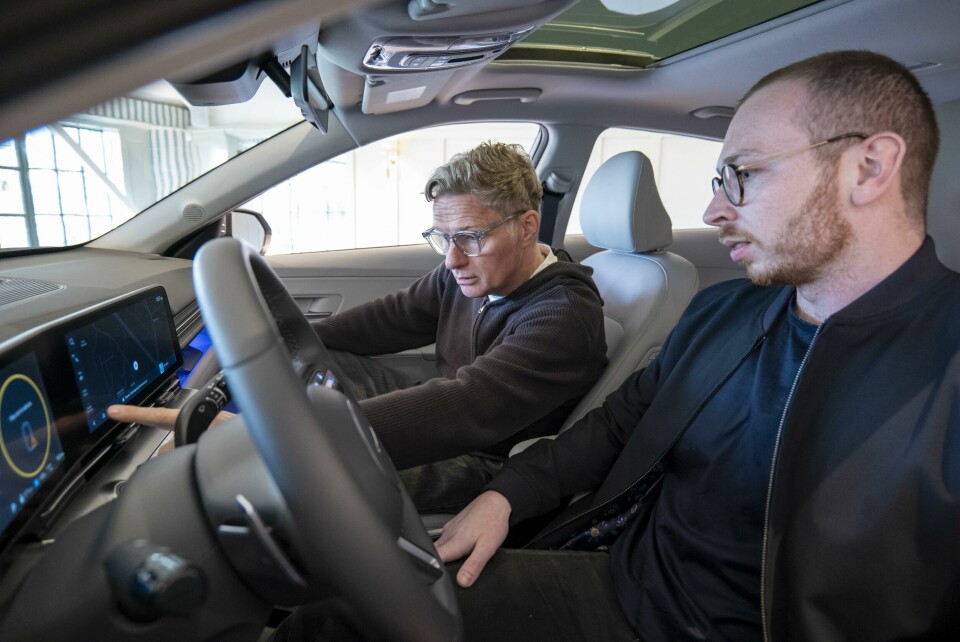
The primary HMI consists of dual 12.3-inch panoramic display screens, with one angled slightly towards the driver; the haptics are responsive and the graphics sharp. Below this sits a plinth with buttons and a couple of dials. The centre console has extra storage, charging ports and a few other buttons. Carmakers are still figuring out how to balance analogue and digital touchpoints in the cabin, and this feels like a nice mix. Loasby says it was ultimately about reducing clutter and keeping things simple.
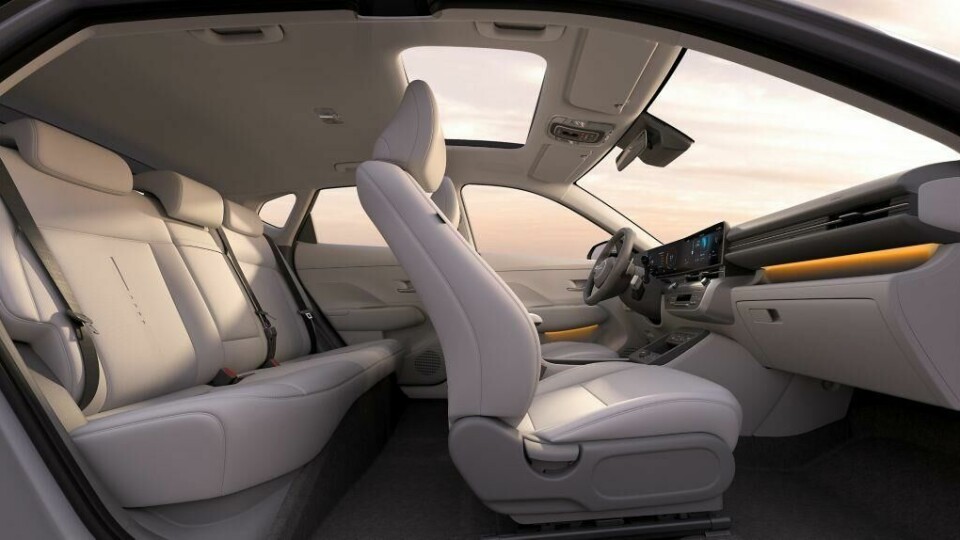
Elsewhere in the cabin, and it becomes clear that storage was a priority. Indeed, the team was tasked with analysing empty space through “Project Air” which involved creating a cross-section of the instrument panel to see where wasted space could be put to better use. It resulted in a wide cave between the glovebox and the HVAC – perfect for storing phones, snacks, keys and other trinkets. (Within seconds of sitting in the passenger seat, Loasby had already plonked his phone and glasses in there.) “We don’t like to package air,” he explains.
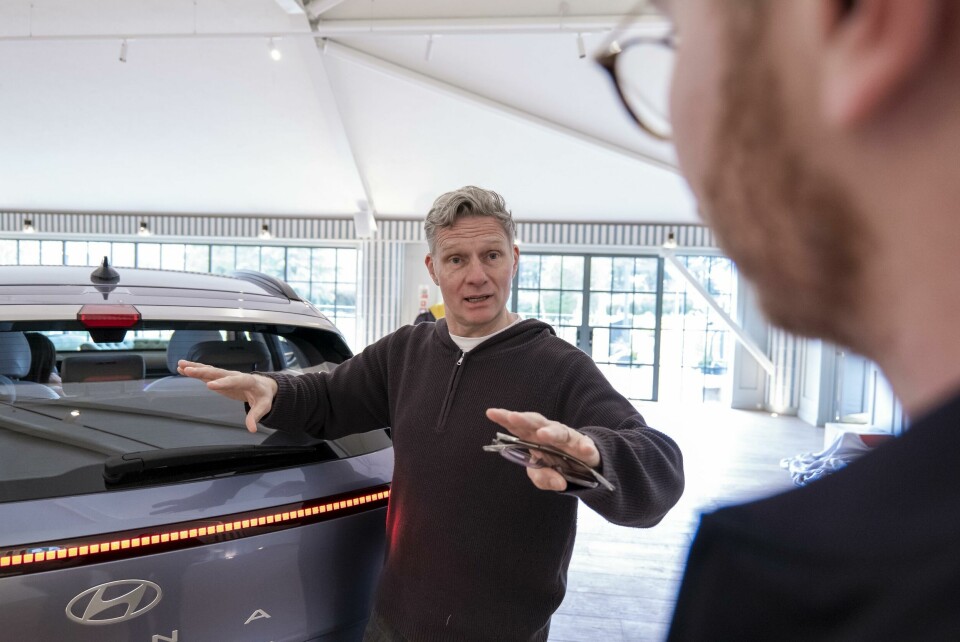
Ultimately the Kona EV is part of the brand’s ‘chess piece’ approach in which each model has its own distinct look or ‘move.’ “This chess piece still has the same move, it’s just grown up,” concludes Loasby. “It’s about offering a bit more space while continuing to meet the active and varied lifestyles that Kona drivers have.” That chess set will continue growing, with plans to bring 11 new Hyundai EVs to market by 2030.















